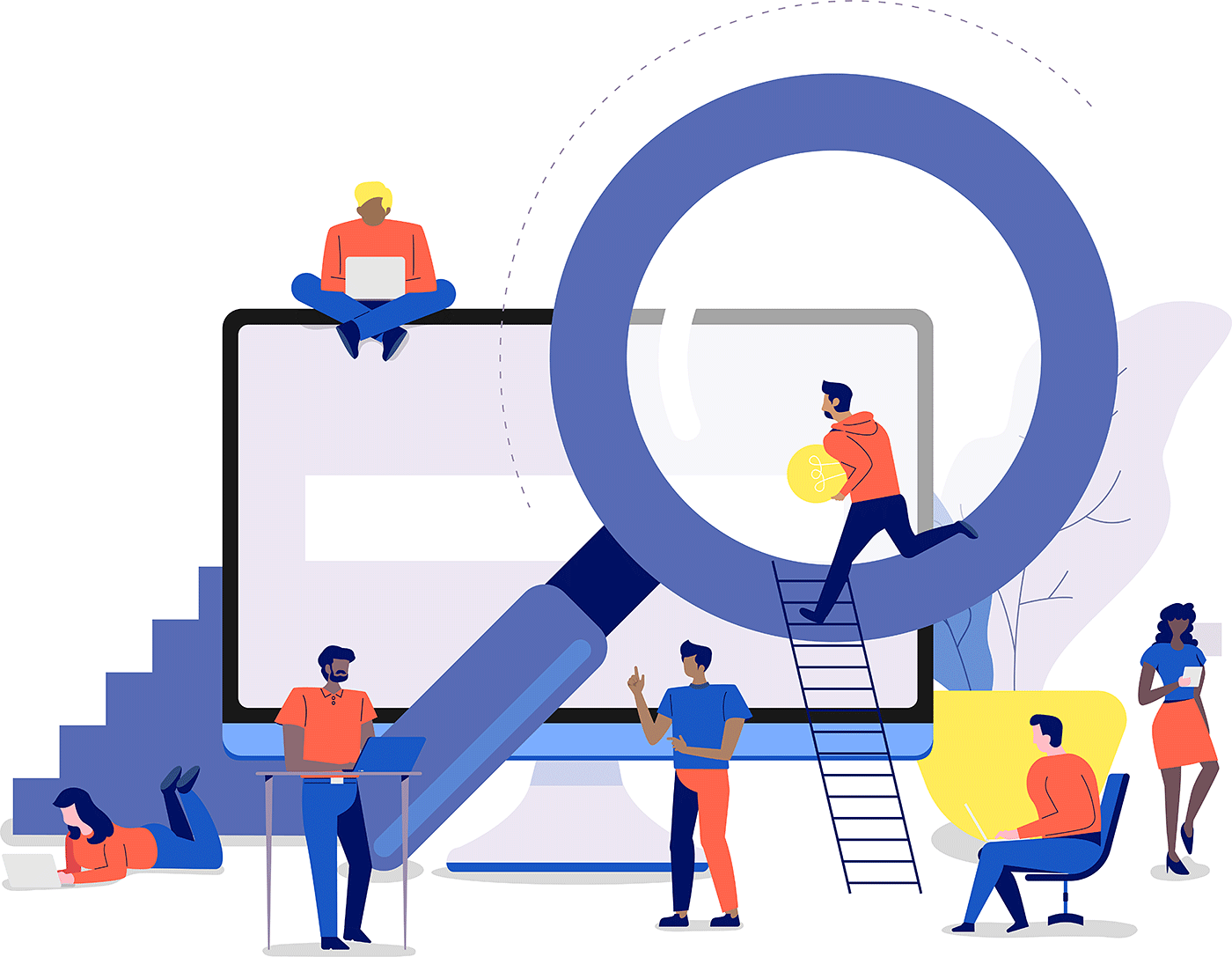New employment relationships can better match the values and needs of both employers and employees.
By Lisa Taylor
Workplaces are microcosms of the broader society in which they exist. They are made up of groups of people working together (or not) to achieve a common purpose (or not). Organizations have their own power structures, cultures, language, and routines. This is why it can feel totally different to work in one company compared with a competitor, doing exactly the same job.
Massive social shifts are taking place across our economy and society. Our values, culture, and cohesion are all being questioned. This is extremely exciting—and also nerve-wracking. To get work-related shifts right, we have to make sure we focus on the right topics.
Future of Work discussions typically focus on skills, job duties, technologies, and output. These are very important; we need people with the right skills ready for work at just the right time. Otherwise, we find ourselves with skills and labour shortages.
But these immediate and measurable aspects of the workforce are built on fundamental agreements, expectations, and understandings about something even more fundamental: the relationships between people and institutions. These relationships are governed by usually unwritten rules, or “social contracts.”
To build a Future of Work where no one is left behind, where the revolutionary change taking place brings in better work and workplaces for all, we need to choose which agreements we want to protect, revise, or rewrite. To do this, we have to understand how our social contracts have changed and propose new relationships that match the values and needs of our time. One way forward for employers is to consider moving from “Robin Hood” to “piggy bank” approaches to engaging and investing in their people.
Understanding social contracts and how they are changing
Recently, we spoke with the president of a mid-sized professional services firm. With 450 employees, he expressed exhaustion and disappointment:
“When did it become my job as the head of a company to provide my employees with their complete sense of purpose and meaning? Why am I the only gateway for them to engage with their broader community? Our employee surveys reflect that the work is interesting, but ‘something is missing’. Isn’t it enough to provide interesting work? How am I supposed to know how to help each and every employee find fulfilment, while still focusing on the business we’re in?”
It’s become popular to criticize employers for what they no longer provide employees. Defined benefits pensions have all but disappeared from the private sector. Gig work, offshoring, and outsourcing have systematically loosened ties between employers and workers. Expectations of employers have shifted. At the same time, our beliefs about workplaces and what work means to us have changed.
“Citizens have shaped the architecture of opportunity in their societies for centuries, and those choices have shaped our lives. We are at a moment in history when new choices need to be made. It is within our gift to shape a social contract that gives us, and those that come after us, a better future.”
Minouche Shafik, What We Owe Each Other
What’s at the centre of all these tensions, expectations, and structures? Social contracts. (Yes, they exist in our workplaces too. Don’t forget, workplaces are microcosms of broader society.)
Social contracts are agreements to cooperate for mutual benefit—in this context, between employers and employees—about which issues of work are collective responsibilities and which ones are left for individuals to take care of alone.
In What We Owe Each Other: A New Social Contract for a Better Society, economist Minouche Shafik lays out how society has changed, which rules have been bent or broken, and how different countries see modern changes through the lens of social contract, or “what is to be provided collectively and by whom” (2021, pp. 8).
The opinion from the exhausted leader above shows that what he thinks are individual responsibilities that his workers should take care of themselves—engaging with their broader community, finding deeper fulfillment than just interesting work—is no longer shared by his workers.
The leader and his workers are approaching work through different sets of unwritten rules.
Today, many of our current work structures and systems are grounded in rules that simply no longer apply to how people live their lives. Think knowledge economy workers having to commute to an office for a nine-to-five shift five days a week, or employers expecting workers to be ‘loyal’ and getting surprised when they switch jobs, or career pauses being viewed as a black mark on resumes.
This discrepancy is a key source of discontent. When the unwritten rules seem to be written for someone else or, worse, to intentionally make life more difficult, people feel an instinctive drive to abandon social systems and break those rules.
So, who gets to set the rules for work—and how do they do it?
History shows us that anyone can write new rules. Groups of employees, single consulting firms, and future-focused leaders have all created new terms, relationships, and agreements that went on to become widespread and simply accepted as “the way work is done.”
What does work mean to us today?
On the one hand, work exists in advanced economies so that goods and services can be produced and labour can be taxed. Those taxes go off to the state in exchange for employment insurance, pensions, and other benefits to offset losses when work isn’t possible (Shafik, 2021, pp. 97).
On the other hand, work is part of identity, purpose, and self-worth, engaging people in challenges that are larger than themselves and bringing human activity together to solve bigger challenges. While the provision of benefits in exchange for labour has been part of the deal for at least a century, recognition of employee engagement and satisfaction is new, only being coined by Professor William Kahn and measured for the first time in 1990.
Since then, we’ve experienced a shift to more precarious work arrangements, declining long-term benefits, and new focus on employee engagement. The relationship between employers and employees is now fundamentally different than it was in the twentieth century. Yet employment structures and formal expectations remain mostly the same. Managers oversee workers. People are expected to be loyal, and companies are surprised when they aren’t. Or people are treated as transitory, and companies struggle to build lasting value with a revolving door workforce.
What work means to us today is out of balance with employment structures and formal expectations.
The real question is why some changes are adopted while others are not. Most of us believe what makes the difference is the power of the person who is proposing the change. Certainly, power plays an important role, and the way power is distributed in our society is fundamentally unequal and inequitable. Very promisingly, however, this isn’t the whole story of change.
Change actually occurs when everyone—including business owners, leaders, governments, and workers—pay attention to how our social contracts are shifting, which rules no longer serve us, and propose new relationships that better match our values and needs. At this moment in time, then, what types of change do we need?
The Robin Hood and piggy bank approaches to employment structures and expectations
 When considering how the world of work has shifted, Shafik presents two ways to think about the exchange of labour for compensation and benefits. The traditional way is to take a Robin Hood approach: take from the rich and give to the poor.
When considering how the world of work has shifted, Shafik presents two ways to think about the exchange of labour for compensation and benefits. The traditional way is to take a Robin Hood approach: take from the rich and give to the poor.
A good example of this in workplaces are leadership development programs. Traditionally, these are structured for high potential employees to access experiences and thinking that will allow them to learn and grow. The employer (rich) is “giving” this to them (poor). Oftentimes, this is perceived as a privilege and employees, depending on the culture, are told to either strut their stuff as proud peacocks or asked to not tell anyone as there’s only space for so many people in the program.
An alternative approach to considering how we structure, recognize, reward, and compensate workforces is to think of leadership development programs as a piggy bank. Workers aren’t seen as “assets” that serve a purpose for a price. Instead, they’re seen as equity. Organizations invest in workers because they have both short- and long-term interests in producing quality goods and services and fostering strong ecosystems of consumers, partners, and suppliers. Investments are made into individuals so that they can achieve these interests.
Leadership development programs don’t need to be set up to foster Robin Hood environments, where some employees get while others only give. In fact, in the piggy bank approach, these programs are explicitly designed to foster future payoff for everyone. Those who take part are expected to transfer their knowledge to others (including contractors and gig workers). Participants also have to demonstrate how they’ve taken from the collective piggy bank and how they can add to it when they are able. This difference is subtle, but it’s key.
Putting the piggy bank to work for demographic change and career ownership
Today’s hot button topics of demographic change and career ownership give us two opportunities to assess how a piggy bank approach can help us navigate shifting social contracts and rewrite the rules. Consider this:
|
Robin Hood approach |
Piggy bank approach |
|
|
Demographic change |
We have an ageing workforce and outdated career and talent structures. Workforce recruitment, training, and development tend to focus on young talent. One generation benefits at the expense of the other. With Robin Hood solutions, we expect governments to allocate tax revenues to social programs and income supports for older workers who end up displaced from the workforce due to ageism. |
Ageism is a prejudice against our future selves. This means if older workers are struggling within an organization, that will be the future for all workers until it’s addressed. Piggy bank solutions focus on how to better engage and use older worker expertise for the betterment in both the short-term and long-term of all staff. The creation of Legacy Careers® and a focus on meaningful alumni engagement challenge traditional careers thinking and provide clues to the path forward. |
|
Career ownership |
Employers compensate and reward certain employees to mitigate talent scarcity or other risks to the business, at the expense of everyone else who contributes into organizational success. Human resources are like any other resource, and organizations focus on reducing costs while increasing output. New models, access to different labour markets, and the ability to avoid costly benefit and pension contributions mean that employees can be treated as assets. They are acquired for the lowest price possible, their labour used as much as possible, and, at some point in time, deemed fully depreciated and written off. |
Employees aren’t treated as assets but, rather, as equity. Both employers and employees invest in a collective future with each other. Focus shifts from how long to keep someone on the team to how much that person can grow in the shortest amount of time and keep growing. Employee career ownership and workplace culture are investments everyone contributes into and benefits from not only for the duration of their employment, but also long after as alumni of the organization become sources of referrals, clients, and partners. |
Breaking out of industrial age models
As a new wave of technology is about to revolutionize workplaces once again, we have a perfect moment to slow down and identify rules that no longer apply and need to be revised, and how new rules about work, careers, education, and workforce participation should govern the relationships we have with each other in the workplace.
What is the new social contract that will guide us to make decisions in the best interest of our communities, country, economy, and individual careers? Can all of these needs be satisfied at the same time?
We think they can.
In a recent client workshop, we asked a group of senior leaders what they think about the idea of a social contract at work. More specifically, we asked if the following question sparked any reaction: “What do we owe each other?”
For many in the room, it sparked anger. The initial and loudest opinion was that companies, employees, and the broader community don’t owe anything to each other beyond what’s written in legal contracts and agreements.
After a few minutes of debate and reflection, one leader presented a different idea. As the head of a transportation division, she suggested that what the company, employees, and community owe each other is safety. The company needs to uphold standards and promises that keep drivers safe. Drivers need to ensure they conduct themselves with safety as a forefront concern, and communities need to provide infrastructure suitable for hauling freight. When something happens that threatens safety, all parties owe each other quick, honest, fact-based information with a goal to work together to ensure safety is once again established.
After that, all the leaders in the workshop were able to engage in a more meaningful discussion about what it means to have both a legal contract and a social contract in place at work.
Frameworks like the B Corp Assessment, the United Nations Sustainable Development Goals, and the Guiding Principles of Career Development all provide avenues for leaders, employees, and communities to identify what matters most in the relationships they have with each other. All of them help us break out of industrial age models that have governed these discussions in the past. They open the discussion to one of mutual investment where the relative risks and rewards over time can be evaluated, rather than defaulting to transactions through which companies give or take and employees react.
To the leader who asked me how he had ended up being responsible for far more than just the work-related needs of his employees, I say that this shift has happened over time and now represents a mismatch of expectations. To create new balance, each organization can start by asking a basic but challenging question: “What do we want to owe each other?”
